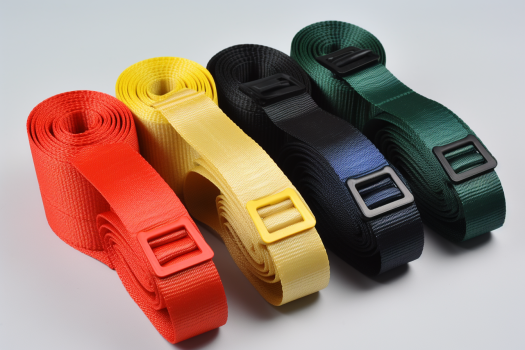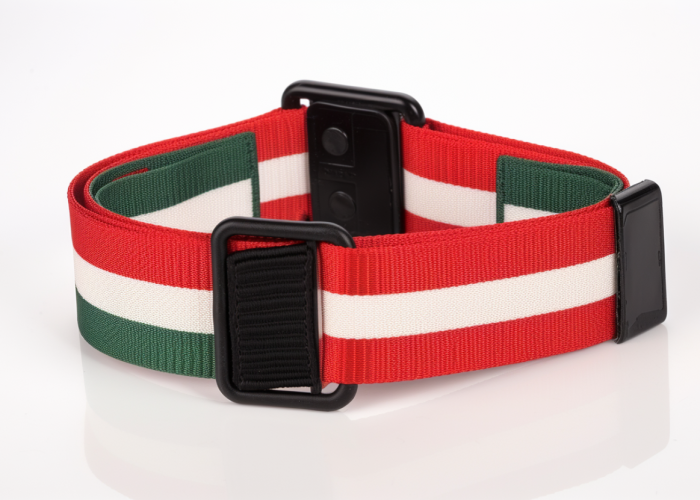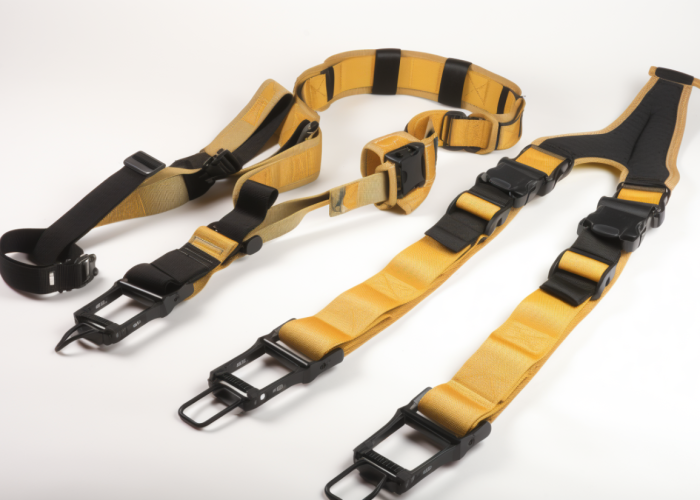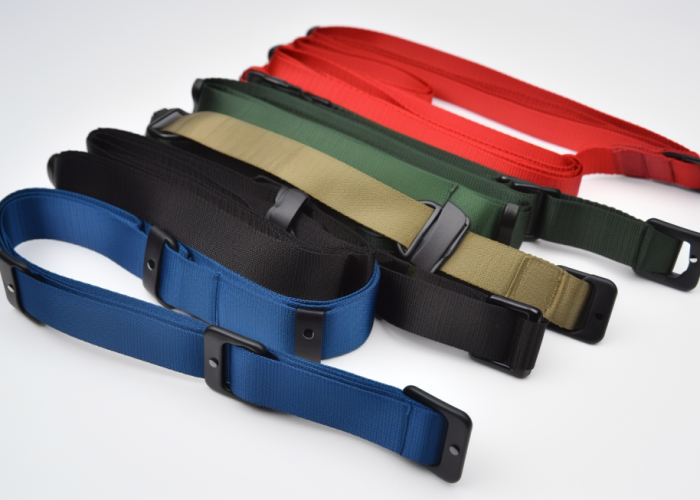Designing effective patient sling straps requires balancing safety, comfort, and functionality while meeting strict industry standards. As expert webbing manufacturers, we provide custom solutions with advanced materials and specialized construction techniques to enhance your medical device performance.
When designing a new patient sling strap, you must consider eight critical factors: material selection, safety ratings, adjustability mechanisms, ergonomic design, lift compatibility, hygiene protocols, regulatory compliance, and user-centered features. Each element is essential for creating safe, effective patient transfer solutions that satisfy both caregiver requirements and patient comfort.
Explore key design factors, specs, and customization options to create high-performance patient sling webbing that meets both safety and market demands.


Webbing manufacturing expert with 15+ years of experience helping product developers build high-performance straps for industrial, medical, and outdoor use.
The best materials for patient sling straps are high-tensile polyester and nylon webbing, breathable mesh fabrics, padded foam or fleece linings, and specialized non-woven disposables. Material selection directly impacts sling performance, with each option offering distinct advantages for specific clinical applications and patient needs.
Key material considerations:
Polyester and nylon webbing provide exceptional strength-to-weight ratios with load ratings from 75-800+ lbs. Polyester excels in moisture resistance for frequent cleaning, while nylon offers better elasticity for dynamic positioning. Advanced manufacturing can create specialized webbing with reinforced edges that prevent fraying during repeated use cycles.
Mesh fabrics are essential for bathing slings and heat-sensitive applications, allowing airflow while preventing moisture accumulation. Strategic mesh panel placement in high-contact areas reduces pressure injuries during extended transfers while maintaining structural integrity through specialized reinforcement.
Padded materials dramatically improve pressure distribution for vulnerable patients. Medical-grade foam or fleece linings with 2cm thickness can reduce pressure points by up to 60%. Heat-fusion bonding techniques eliminate delamination risks during repeated washing cycles.
Reinforcement techniques significantly enhance sling durability. Double-stitched seams with Kevlar threads provide 40-60% greater strength at maximum stress points. Anti-slip silicone coatings prevent dangerous patient shifting during transfers, particularly important for bariatric applications.
Non-woven polypropylene materials provide specialized infection control solutions with sufficient tensile strength for limited-use applications while eliminating cross-contamination risks in high-infection environments.
Material Type Key Properties Best Applications Performance Benefits
Polyester Webbing High moisture resistance, dimensional stability General-purpose slings, high-cleaning environments Maintains strength when wet, minimal shrinkage
Nylon Webbing Superior elasticity, excellent tensile strength Dynamic positioning, shock-absorbing applications Better conformity to body contours, gentle movement
Mesh Fabric Breathable, quick-drying, lightweight Bathing slings, heat-sensitive patients Reduces skin temperature, prevents moisture buildup
Padded Foam/Fleece Pressure-reducing, soft surface Bariatric slings, compromised skin integrity Decreases pressure points by up to 60%
Kevlar-Reinforced Seams High tensile strength, abrasion resistance High-stress junction points Increases seam durability by 40-60%
Silicone Coatings Slip-resistant, washable Contact surfaces, transfer points Prevents dangerous patient shifting
Non-Woven Polypropylene Disposable, infection-resistant Isolation environments, single-patient use Eliminates cross-contamination risk
Safety features and load capacity fundamentally determine sling strap design through weight ratings, structural reinforcement, fail-safe mechanisms, and edge treatments. These critical elements must be engineered precisely to prevent catastrophic failures while maintaining patient comfort and caregiver confidence.
Key safety considerations:
Standard slings support 75-350 lbs, while bariatric designs accommodate 350-800+ lbs with increased webbing width and reinforcement. Manufacturing must scale accordingly, producing wider, denser webbing for higher-capacity applications while maintaining flexibility.
Safety testing follows rigorous protocols with load testing to 4x rated capacity under BS EN ISO 10535 standards. Fail-safe connection systems prevent disengagement through redundant attachment points and visual indicators. Color-coded components reduce misattachment risks in high-stress or low-light conditions.
Edge treatment significantly impacts safety and comfort with heat-sealed or bound edges preventing fraying while eliminating abrasion points. Smooth-edge finishing techniques distribute pressure evenly across contact surfaces to reduce skin damage risks.
Essential adjustability features include multiple color-coded loops, quick-release buckles, adjustable strap lengths (24-60″), and specialized sizing options for pediatric through bariatric patients. These customization elements ensure proper patient positioning while accommodating anatomical variations and mobility limitations.
Key adjustability considerations:
Multiple positioning loops provide crucial customization with color-coding for intuitive identification and precise patient positioning. Quick-release buckles reduce application/removal time by up to 70% while maintaining secure connections.
Proper sizing dramatically impacts safety and comfort with standard ranges (24-60″) for most adults and specialized options for pediatric and bariatric patients. Color-coded systems provide immediate visual feedback for proper selection, reducing errors and enhancing safety.
Customized solutions for unique mobility needs include asymmetric designs for amputees and specialized support for non-ambulatory patients, requiring advanced manufacturing capabilities that produce complex webbing patterns with varying widths and reinforcement.

Optimizing ergonomics and comfort requires wide padded straps (>2cm thickness), contoured shapes that accommodate anatomical variation, strategic pressure distribution, and breathable materials that manage moisture and heat. These design elements prevent pressure injuries while enhancing patient comfort during transfers and extended positioning.
Key ergonomic considerations:
Wide, padded straps reduce pressure by 40-50% at contact points. Contoured shapes that follow natural body curves reduce unwanted movement during transfers by up to 60%. Strategic pressure distribution through differential padding enhances comfort at high-pressure areas while maintaining flexibility.
Breathable materials with perforated or mesh panels reduce skin temperature by 2-3°C compared to solid materials. Designs accommodating natural joint articulation prevent unwanted strain while specialized elastic components provide controlled flexibility at key movement zones.
Lift compatibility is essential because standardized connection points (typically 2-4 attachment systems), universal design adaptations, and hoist-specific configurations ensure safe integration with existing equipment. These compatibility features prevent dangerous mismatches while maximizing the utility of sling products across various clinical environments.
Key compatibility considerations:
Standardized 2-4 point attachments ensure consistent performance across various lift systems. Universal designs adaptable to multiple lift types expand application potential while reducing inventory requirements. Safety interfaces prevent dangerous misconnections through mechanical or visual indicators confirming proper engagement.
Integration testing validates real-world compatibility through systematic verification with common equipment. Custom solutions for proprietary systems require specialized configurations enabled by advanced manufacturing capabilities for non-standard webbing shapes and attachments.

Critical hygiene and maintenance factors include machine-washable antimicrobial fabrics, chemical-resistant coatings for sanitization, disposable options for infection control, and UV-resistant materials for extended service life. These elements ensure patient safety while reducing operational costs through improved durability and simplified cleaning protocols.
Key hygiene considerations:
Machine-washable fabrics withstand 160°F commercial laundering with harsh disinfectants while maintaining structural integrity. Antimicrobial treatments reduce bacterial populations by >99% on contact surfaces between cleanings.
Chemical-resistant coatings prevent degradation from repeated exposure to disinfectants. Moisture management features with hydrophobic properties minimize drying time after cleaning by up to 60%. Disposable options provide specialized solutions for high-infection-risk environments with sufficient tensile strength for safe patient handling.
Regulatory compliance requirements impact sling design through mandatory FDA registration (21 CFR 880.5960), CE marking protocols, ISO 10535 load testing standards, ISO 13485 quality management systems, and detailed labeling requirements. These regulatory frameworks establish minimum safety standards while ensuring consistent performance across manufacturing lots.
Key regulatory considerations:
FDA registration classifies patient slings as Class I medical devices with specific requirements. CE marking verifies essential requirements for European markets through comprehensive technical documentation. ISO 10535 specifies load testing to 4x rated capacity under worst-case conditions.
ISO 13485 quality systems ensure consistent production through comprehensive documentation and process controls. Labeling requirements provide critical usage guidance with clear markings for safe working loads, lot traceability, and care instructions that withstand repeated cleaning cycles.

Superior user-centered design incorporates intuitive color-coding for low-light environments, minimal-step application methods, headrest support for non-ambulatory patients, and asymmetric designs for specialized needs. These ergonomic elements improve caregiver efficiency while enhancing patient dignity and comfort during transfers.
Key user-centered considerations:
Intuitive color-coding and tactile features enable proper orientation in challenging environments. Roll-and-tuck application methods reduce positioning time by 40-60% compared to traditional designs, improving caregiver compliance and patient experience.
Patient-specific supports include integrated headrests for non-ambulatory individuals and asymmetric designs for amputees or limited mobility patients. Caregiver ergonomic features reduce physical strain through strategic handle placement and grip designs that decrease force requirements during positioning.
Designing effective patient sling straps requires balancing material selection, safety features, ergonomics, and regulatory compliance while prioritizing both patient comfort and caregiver usability. By addressing these eight critical factors, manufacturers can develop superior products that enhance safety and clinical outcomes. Contact us to explore custom webbing manufacturing solutions tailored to your specific patient sling requirements.
Select machine-washable fabrics with antimicrobial treatments and chemical-resistant coatings. These materials withstand commercial laundering at 160°F with harsh disinfectants while maintaining structural integrity. Quick-drying constructions with hydrophobic properties minimize bacterial colonization between cleanings.
Implement intuitive color-coding, minimal-step application methods, and ergonomic handle placement. Roll-and-tuck designs reduce positioning time by 40-60%, while strategic grip placement decreases physical strain during transfers. Include tactile indicators for proper orientation in low-light environments.
For optimal durability and comfort, choose high-tensile polyester or nylon webbing with padded linings. Polyester offers superior moisture resistance and washing durability, while nylon provides better elasticity. Add padded linings at pressure points to reduce skin irritation and improve patient comfort during transfers.
Compliance with FDA regulations, CE marking, and ISO standards is mandatory for market access. Patient slings must meet FDA registration requirements (21 CFR 880.5960), CE essential requirements for European markets, ISO 10535 load testing protocols, and ISO 13485 quality management standards.
Engineer distinct standard (75-350 lbs) and bariatric (350-800+ lbs) designs with proportional webbing reinforcement. Increase webbing width and density for higher capacities while ensuring all components are load-tested to 4x rated capacity per ISO 10535 standards.
Incorporate multiple color-coded positioning loops and quick-release buckles with clear visual indicators. Use standardized color systems (red/small, green/large) for intuitive size identification and ensure adjustment mechanisms accommodate 24-60″ ranges for diverse patient populations.